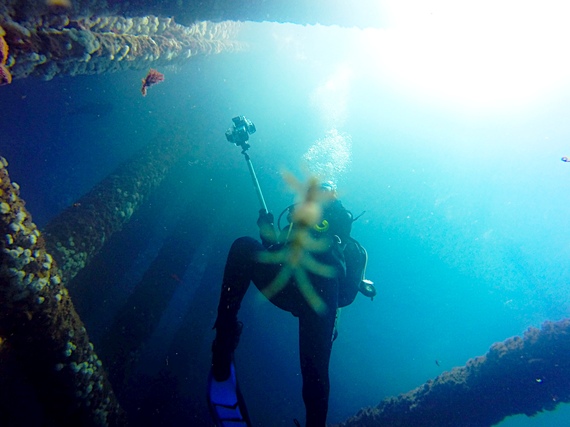Spring is a season when new life is replenished and although this productivity is obvious on land, the ocean, with it's seemingly unchanging surface, is also privy to this season. Especially off the coast of California, where the winds and deep underwater canyons provide the perfect conditions for upwelling. In fact, coastal upwelling regions, accounting for less than 1% of the ocean surface, contribute roughly 50% of the worlds fishing landings (NOAA).
Before I go into detail on upwelling, it is important to first address the wind. Winds create a powerful and direct effect on the oceans and are an important force in creating currents. From the global circulation of entire ocean systems to small eddies nearshore, winds move water and its resident animals and plants in complex and interesting patterns.
In the spring, the warm winds from the north blow parallel to the coastline towards southern California. When this occurs, an intriguing and biologically important event takes places. Affected by the rotation of the earth, these winds move water at right angles to the direction the wind is blowing, a phenomenon known as the Coriolis effect. Along the California coastline, winds that blow from the north drive surface waters offshore. As surface waters are pushed offshore, water is drawn from below to replace them. The upward movement of this deep, colder water is called upwelling.
Upwelling brings cold, nutrient-rich waters to the surface, which encourages the growth of large blooms of phytoplankton. The phytoplankton blooms form the ultimate energy base for large animal populations higher in the food chain, such as tuna, seabass, and even large marine mammals, like whales. Although an impressive biological event, this is not the only major consequence of upwelling because upwelling also affects animal movement. Upwelling moves nearshore surface water offshore, and takes with it water is floating in the water column, such as larval young produced by most marine fish and invertebrates. These larval young are tiny, ranging from microscopic to the size of a potato chip, and they spend the first few weeks or months of life adrift in the water column. Upwelling that moves surface water offshore can potentially move drifting larvae long distances away from their natural habitat, to shelters such as a nearby oil and gas platform.
This past spring, Emily and I experienced the plethora of larval young swarming around California's offshore oil and gas platforms. Although we focused our cameras on the anemone covered beams, or the seal lion curiously swimming by, when we revisited our footage after the dive we found that many of the photos had been "photobombed" larvae that landed on the lens! Even, when we exited the water, we noticed that our wetsuits were crawling with life. It was quite a shock to see thousands of tiny white shrimp and other larvae contrasted against our black wetsuits.
Upon further investigation, we found that offshore oil and gas platforms don't cause upwelling but rather they are a landing site for those larvae displaced by upwelling. In fact the vertical platform structures may actually cause a slight shift in current direction that mixes the surrounding ocean nutrients. This mixing, although small, provides the distribution of an important foundational food source for other, larger fish that call offshore oil and gas platforms home.
To learn more, visit our website, www.rig2reefexploration.org or follow us on Instagram @rig2reefexplorers.
